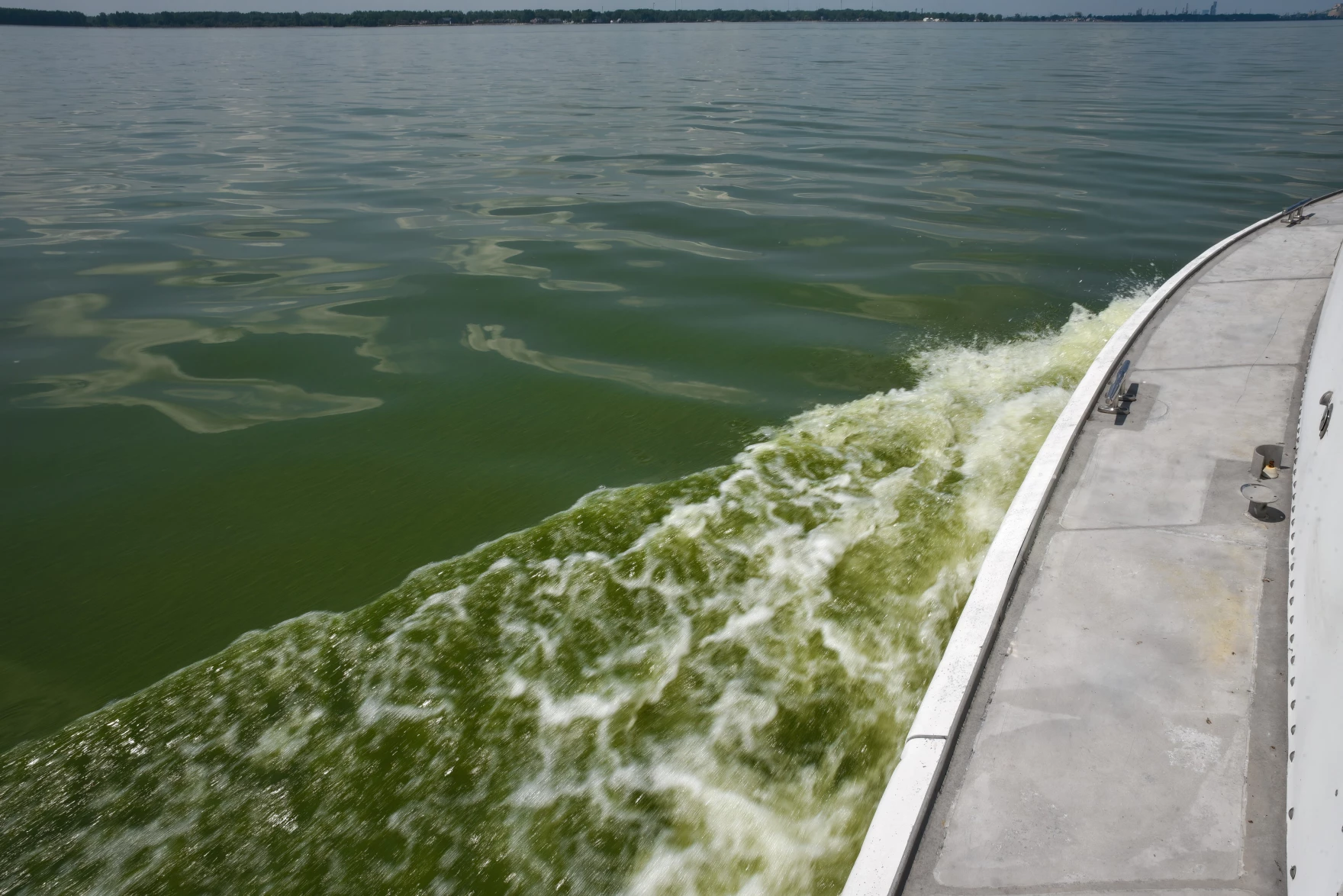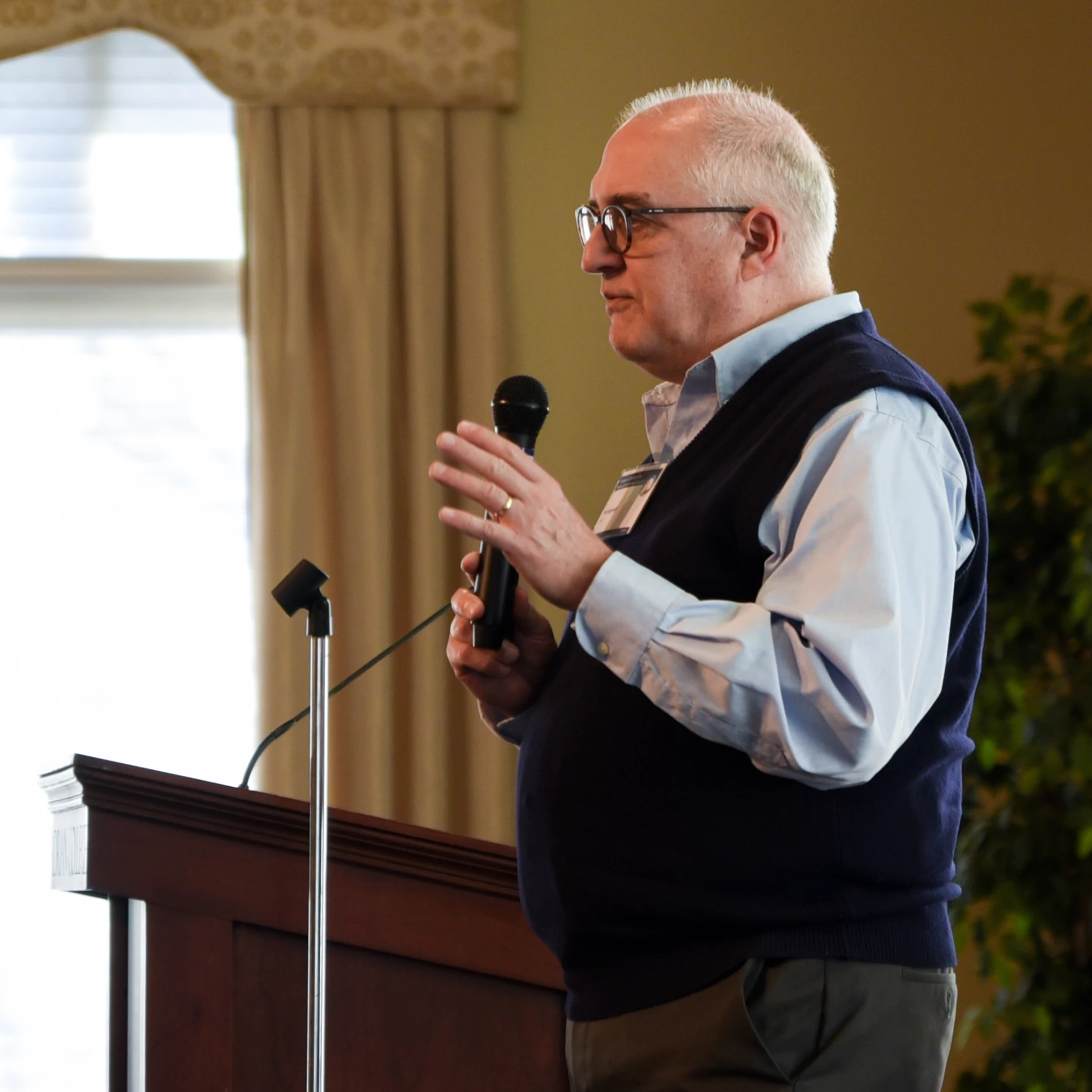
By Lester Graham, Michigan Radio
The Great Lakes News Collaborative includes Bridge Michigan; Circle of Blue; Great Lakes Now at Detroit Public Television; and Michigan Radio, Michigan’s NPR News Leader; who work together to bring audiences news and information about the impact of climate change, pollution, and aging infrastructure on the Great Lakes and drinking water. This independent journalism is supported by the Charles Stewart Mott Foundation. Find all the work HERE.
Officials from Michigan want to reduce phosphorus pollution going into Lake Erie, but they’re not exactly sure how or when they’ll reach their goal.
At a conference this week, state government leaders, researchers, and not-for-profits looked at research and outlined strategy to lower Michigan’s share of phosphorus feeding large cyanobacterial blooms in the western basin of Lake Erie. Cyanobacteria can release toxins that are damaging to humans and animals.
The goal is to reduce phosphorus runoff by 40% from two sources.
Two-thirds of the reduction is to come from wastewater treatment plants. Detroit’s Great Lakes Water Authority has already made significant reductions. Now smaller municipalities are facing stricter phosphorus limits as their permits are renewed.

Phil Argiroff, Acting Director of the Water Resources Division of the Michigan Department of Environment, Great Lakes, and Energy speaks to Michigan’s 2023 State of the Western Lake Erie Basin Conference in Adrian, Michigan this week. (Photo Credit: Lester Graham/Michigan Radio)
“We changed the effluent limits in the permit. We give them a schedule to comply and they work to do operational changes at the wastewater treatment plant, some minimal capital changes as well to meet the employment limits that we prescribe,” said Phil Argiroff, acting director of the Water Resources Division of Michigan’s Department of Environment, Great Lakes, and Energy (EGLE).
Many of the state’s municipal wastewater plants already struggle with the costs of maintaining infrastructure. That’s because the state has cut municipalities’ portion of revenue sharing. Argiroff says the new restrictions should not cost cities that much.
“And we’re going to work with them. We’re going to give them compliant schedules. We already have a consultant from EPA that’s going to help them determine methods that will help them achieve those effluent limits.”
He says in most cases there won’t be a need for big capital expenses such as new construction. Often, using an additional chemical can lower the phosphorus levels getting into streams that flow to Lake Erie.
The other third of the phosphorus reduction is expected to come from farms. That is not as simple as changing a permit.
Phosphorus runoff from farms is not restricted by the Clean Water Act.
So, the state will have to persuade farmers to use methods such as conservation tilling, grass buffers along ditches and streams or constructing wetland areas.
Those changes are not an easy sell said Tim Boring, director of the Michigan Department of Agriculture and Rural Development.
“You’re telling farmers you want to make their management on a acre by acre basis more complicated. You’re asking them to take on short term risk. You’re asking them to invite social stigma from neighbors, which is a real thing.”
One older farmer said at a farmers’ field day that he’d adopted new conservation methods, but was harassed so much by other farmers that he stopped talking about it.
Boring added the government is basically asking farmers to adopt the conservation practices when the ag industry advice to be successful is exactly the opposite way. Put more land into production. Raise more livestock.
And livestock manure is a big part of the phosphorus pollution problem. That manure is spread on farm fields as a fertilizer.
But more of it is being applied than the crops will take up.
Environmentalists want government to restrict how big factory farms can get in the hopes of limiting how much manure is produced. Politically, that’s highly unlikely.
Boring said manure itself is not the problem.
“The irony with all of this is the fact that we have a manure allocation problem, not a manure quantity problem. We have manure in all the wrong places. If we’re serious about building soil health, if we’re serious about building biological capacity of soils, manure is a piece of this. The problem is we just are putting too much manure in too few places today.”
But it’s expensive to transport manure to other fields farther away and there’s little incentive to consider it.
Researchers can tell a lot of what’s happening on farmland from satellite photos, monitoring streams, and driving by farm fields. So, they mostly know which farms have the potential of making the biggest difference in reducing phosphorus pollution.
The problem is, incentives to make changes to reduce phosphorus runoff have not been targeted at those farms.
“Up to this point we’ve always — most programs, even our grant funding, it’s kind of a first-come, first-serve and the willing. And we need to get past just working with the willing farmers. We have to start identifying where are the impacts coming from and working with those producers,” said Thad Cleary an Agricultural Specialist with EGLE’s Water Resources Division.
But government agents approaching farmers, suggesting they need to change their practices seldom results in good will or cooperation.
Farmers tend to trust other farmers. The only way major phosphorus reduction will be accomplished is by working with successful farmers who understand the need to reduce phosphorus runoff and encourage them to talk to their fellow farmers.
Once there’s buy-in, there’s lots of help available for buffer strips and drainage tools, much of it at little or no cost.
Not-for-profit groups such as Ducks Unlimited, Legacy Land Conservancy, and Nature Conservancy are offering help. The federal government has several conservation programs that can aid farmers in things such as buffer strips and drainage that filters phosphorus loaded sediment.
But the big changes such as conservation tilling practices take new farm equipment and that’s expensive. And new tillage practices might mean lower crop yields at first (although some farmers report large yields in just a few years).
It’s risky and that’s a difficult hurdle for most farmers.
Michigan will miss its target date of 2025 to reduce phosphorus runoff by 40 percent. When asked what the new target date is, one state official said “That’s an excellent question. Ask me again in five years and we’ll see.”
Catch more news at Great Lakes Now:
Building a Smart Lake Erie Watershed
US EPA okays Ohio plan to reduce toxic cyanobacterial blooms; Environmentalists say it won’t work
Featured image: A National Oceanic and Atmospheric Administration research vessel going through cyanobacterial blooms early this summer. (Photo Credit: Lester Graham/Michigan Radio)




